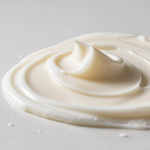Your Premium Hair Essence Partner
Turnkey OEM/ODM Solutions for Seamless Brand Creation

OEM/ODM Hair Essence: Where Professionalism Meets Unique Formulations
Over 10,000 mature formulas are available for your selection. We can fine-tune the fragrance, texture, skin feel and efficacy to meet your specific needs, creating a unique formula exclusive to you. Every formula is market-tested and proven.
Essence oil texture |
Gel texture |
Lotion texture |
Watery texture |
Once the Formula's Chosen, We've Got the Rest Covered!
Tailored for OEM/ODM clients, we offer a one-stop service. Our expert team designs products to match market trends and your brand. We carefully source packaging materials for quality and appeal. With a reliable logistics network, we ensure timely delivery. Just tell us your needs, and we'll make it happen.
 Batana Essential Oil |
|
Hair Essence Lotion |
Hair Essence Water Spray |
About Yunmei
Yunmei was founded in 2005, focusing on OEM/ODM one-stop service, to provide global users with safe and efficient efficacy skin care products. 20+ years of research and development, 30+ patented technologies, 92% efficacy verification pass rate, 30000㎡ smart factory through the United States GMPC and the EU ISO double certification. Shiseido expert team technical support, serving 180+ countries worldwide. Guangdong High-tech Enterprise certification, to provide you with safe, efficient, reliable skin care products.
Planning
Proposal
Trial production
Formulation determination
Quotation
Order
Manufacturing
Delivery
Your Premium Hair Essence Partner
Custom Private Label Shampoo
Custom Private Label Shampoo
Anionic Surfactants
Features: Strongest cleaning power, but may irritate the scalp. The disadvantage of too strong cleaning power is that it will cause over-cleaning, making our hair rough and easy to tangle. Common types: Sodium laureth sulfate: strong cleaning power, rich foaming, low irritation, often used in daily shampoo. Sodium lauryl sulfate: strong cleaning, but high irritation, gradually replaced by mild surfactants. Sodium cocoyl methyl taurate: mild and low irritation, suitable for sensitive skin.
Cationic Surfactants
Features: Mainly used as a conditioning agent to reduce hair friction and static electricity, but the cleaning effect is weak. It can repair damaged hair, improve hair elasticity and luster, and protect hair from external environmental damage, such as ultraviolet rays, hot air and pollutants. Common types: quaternary ammonium salts, such as stearyl trimethyl ammonium chloride, such as stearyl trimethyl ammonium chloride, used for hair softening and antistatic.
Amphoteric Surfactants
Features: It has both cationic and anionic properties and is extremely mild. Commonly used for infants and those with delicate and easily damaged hair because they do not cause stinging in children's eyes, have low foam irritation, and have good cleaning power. Common types: Cocamidopropyl betaine: strong foaming power, synergistic with anionic surfactants. Sulfosuccinates: low irritation, widely used in infant shampoo.
Nonionic Surfactants
Features: mild, non-irritating, often paired with anionic to improve efficacy. The mildest of all cleansers, but also weaker in cleaning ability, suitable for sensitive scalps, and helps enhance the antistatic properties of shampoo. Common types: Polysorbates: used to stabilize formulas. Cocamidopropyl betaine: has both cleaning and conditioning effects, which can reduce the irritation of anionic surfactants. Fatty alcohol ethoxylates: suitable for dry hair formulas.
Natural Surfactants
Natural surfactants come from plants, such as sarsaparilla, soap grass, soap bark, ivy, and agave, and have poor cleaning effects on hair.
How to Choose a Shampoo that Suits you?
Choose a neutral scalp according to the scalp type:
Neutral scalp: normal cleansing
General anionic detergents are sufficient for normal cleansing, supplemented with zwitterionic or nonionic detergents to enhance conditioning effects.
Oily Scalp: Strong Cleansing, Oil Control
It is recommended to use anionic surfactants with strong cleansing power, such as sodium laureth sulfate and sodium lauryl sulfate. Combined with oil-removing active ingredients: tea tree oil, mint, etc. Avoid: heavy silicone oil ingredients (such as polydimethylsiloxane), which can easily cause pores to clog.
Dry Scalp: Moisturizing, Gentle Cleansing
It is recommended to use mild surfactants, such as cocoyl betaine, sodium cocoyl methyl taurate, and sulfosuccinate. Combined with moisturizing ingredients: glycerin, hyaluronic acid, panthenol, etc. Combined with nourishing ingredients: coconut oil, jojoba oil, shea butter. Avoid: strong irritating surfactants (sodium laureth sulfate, sodium lauryl sulfate).
Sensitive Scalp: Low Irritation, Soothing
Recommended mild surfactants: sulfosuccinate, amino acid surfactants. Combined soothing ingredients: chamomile extract, calendula, ceramide. Combined anti-inflammatory ingredients: Centella asiatica, aloe vera. Avoid: fragrances, preservatives (such as methylisothiazolinone).
Considering a private label Skin care brand?
Get started with these 10 must-ask OEM/ODM questions every entrepreneur needs to know.
Are there factories and laboratories that can be visited?
Of course, we support factory inspections.
Do you support exclusive formulation research and development with confidentiality agreements?
Yes, we have a professional R&D team and abide by business secrets.
How to evaluate the R&D strength of OEMs?
Check whether the laboratory configuration has an independent laboratory (not outsourced) and equipment list.
How can OEM help brands with marketing?
Provide finished product shooting material packages and jointly develop clinical test reports.
How long does it take to develop and produce a custom skincare product?
ODM: 4–8 weeks (using existing formulas).
OEM: 3–6 months (includes R&D, testing, and production).
Factors affecting timeline: Ingredient sourcing, stability testing, and packaging lead time.
How do ensure product safety and quality?
Stability & compatibility test reports (3–6 months). Patch test results (for sensitive skin claims). GMP, ISO 22716, or FDA-certified facilities.
Can customize the packaging with my brand logo?
Yes! Most manufacturers offer: Label printing (matte/glossy, embossing) ,Custom bottle shapes, Eco-friendly options (PCR plastic, glass, biodegradable tubes) .
Can request samples before bulk production?
Yes, always request samples!
What is the minimum order quantity (MOQ) for private label skincare?
Typically 1,000–5,000 units per product, but some manufacturers offer lower MOQs (e.g., 500 units) for startups.
What is the specific OEM cooperation model?
Under the OEM model, the brand provides product formula, production process and packaging design requirements, and the OEM factory produces according to these requirements.
























